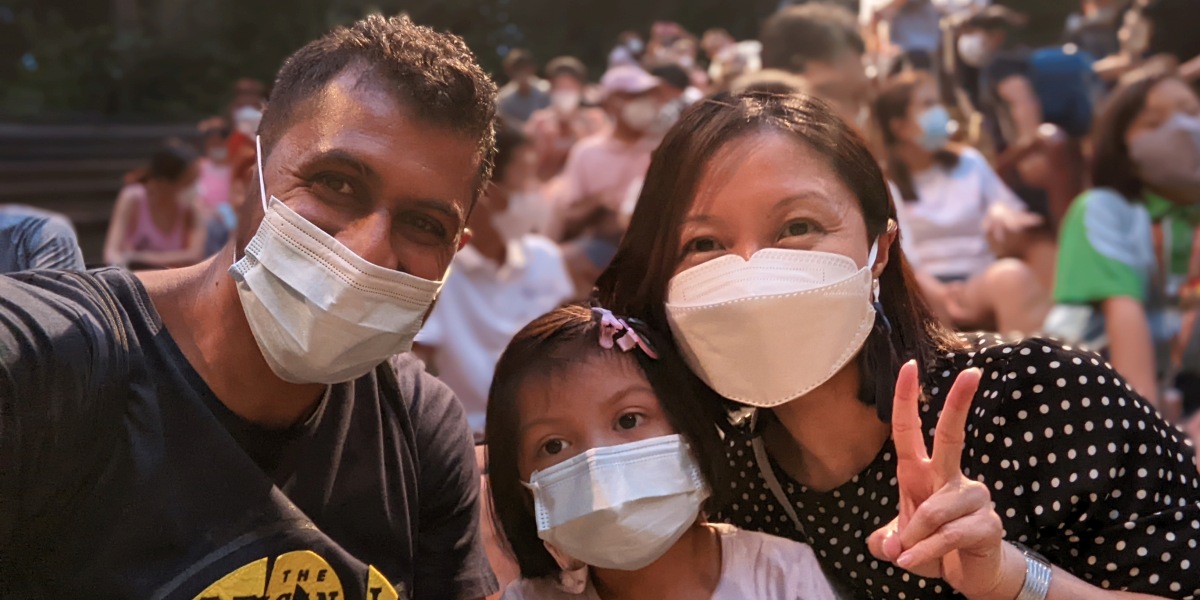
Being in an intercultural marriage may mean being greeted with some raised eyebrows. But for Catherine Nadira Tan and her business owner husband Yasin Razak, what concerns them is how to prepare their six-year-old daughter Dahlia to embrace diversity and to deal with any identity or cultural questions that may pop up.
There are definite advantages to being an intercultural child, says Catherine, a communications professional and kidlit author. “Dahlia receives money packets twice a year! Red ones during Chinese New Year and green ones for Hari Raya!”
While the festivals have been double the fun for Dahlia, they are also opportunities for cultural immersion, giving her a window into different cultures, says Catherine.
Experiencing diversity
In addition to enjoying both Indian and Chinese festivals, Yasin and Catherine also believe in diversity for Dahlia’s preschool experience. She is now at a kindergarten where she counts children from different races and nationalities as her friends.
“Yasin and I are very conscious about giving Dahlia the opportunity to know different cultures by making friends, through playdates, books, songs or even attending weddings,” says Catherine. “We feel that allowing her to interact with a wider range of social groups will make her feel more confident and comfortable in her interactions with others.”
Open conversations
While some intercultural couples may feel pressure from family about raising their children in just one culture, Dahlia’s grandparents encourage her to embrace both cultures. This has given Catherine and Yasin the flexibility to have open conversations with each other about how they should help Dahlia navigate her identity and culture.
“We don’t have conservative families who dictate how a child is to be raised. For that, we are blessed, as we have the freedom to parent in our own way,” said Yasin. “We also don’t dictate what she eats, allowing her to make her own choices. However, we do make it a point to try cuisines from both our cultures and if we have dim sum, to tell her that it is Chinese cuisine.”
Being biracial, a child’s identity can be fluid, says Catherine. Dahlia has associated herself before as Indian and another time as Chinese. Catherine makes the effort to explain that she is really a mix of two races and cultures.
Encourage bilingualism or trilingualism
Both parents try to give Dahlia a language-rich experience at home, where she gets to hear, speak, read in more than one language. Yasin speaks to her in English, while Catherine speaks to her in Mandarin, and their Indian helper speaks to Dahlia in Tamil.
“We try not to make learning another language a torturous experience. Instead, we try to tap into her areas of interest. If she is interested in something, we expose her to the songs in Mandarin and I’ll borrow related books from the library to read to her.”
“We explain to her that the more languages she knows, the more friends she can make and can better understand people who are different from her,” explains Catherine.
Use conversational starters
When Dahlia notices families that are of mixed race, Catherine will use it as a conversational starter to talk about families with parents of different nationalities or races.
“She knows that it’s nothing to be ashamed of or feel odd about. We try to explain to her that families can be so diverse,” says Catherine. “All of us have certain preconceived notions or biases about other races. As a parent, I’ve grown to be more aware of what I say. I feel that children really look up to parents and modeling is so important, as well as the choice of words we use.”
“Kids see things in black and white. As parents, we need to continuously tell her about grey lines, that not all sets of parents have the same race or nationality, and some grow up in homes with single parents or with guardians,” said Yasin.
Finally, remember that growing up in a mixed family is one of the most enriching experiences a child can have, allowing him or her to grow up with a strong sense of diversity, and the ability to switch between cultures.
Catherine Nadira Tan is the author of Secrets of Singapore: Chinatown and Secrets of Singapore: National Gallery .